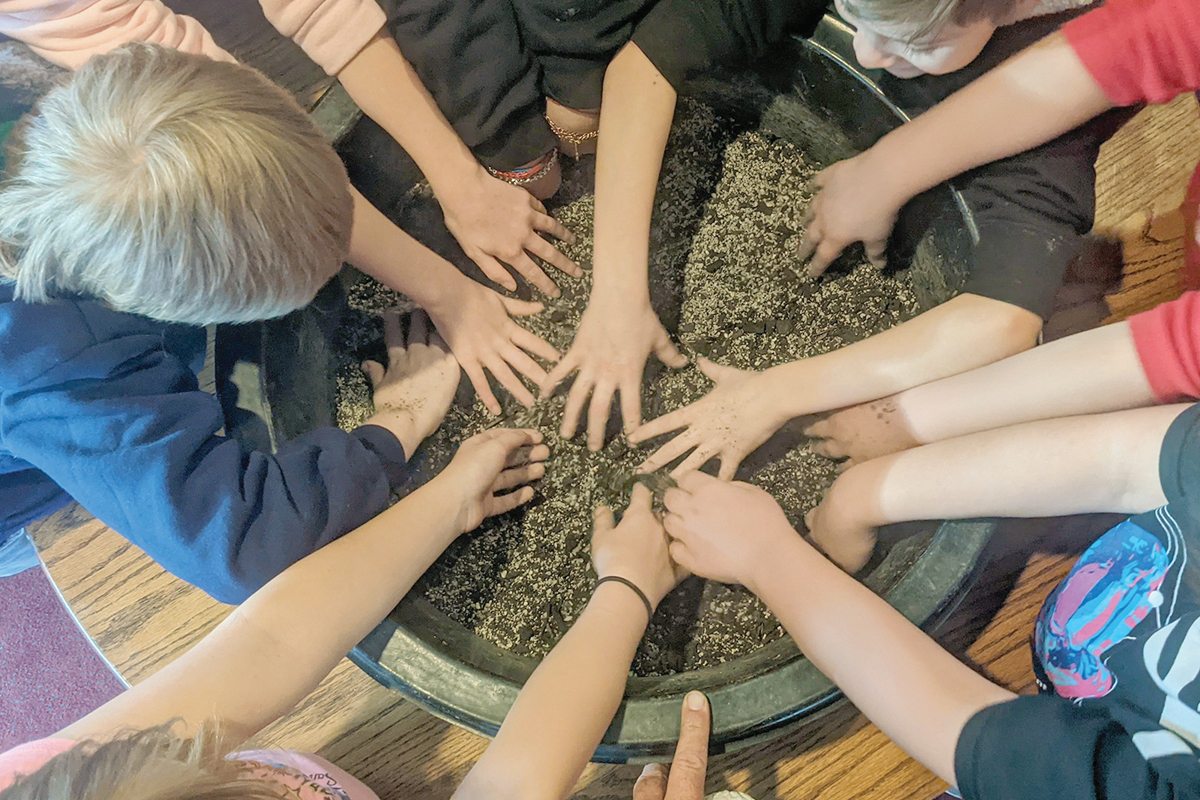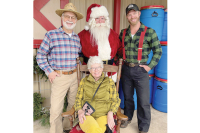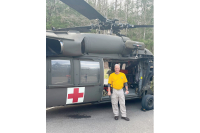Notes from a plant nerd: You reap what you sow … if you’re lucky
 Kids put their hands in to mix up seed bombs. Adam Bigelow photo
Kids put their hands in to mix up seed bombs. Adam Bigelow photo
Whoever first wrote down the phrase, “You reap what you sow” was definitely not a farmer or gardener. I’ve started following that phrase with, “…if you’re lucky.”
See, I’ve been gardening with native plants and growing vegetables for a long time, and I am here to tell you that not every seed that I sow comes to fruition.
Ironically, autumn is a time for both reaping and sowing. How many images from Halloween include the Grim Reaper? Maybe he’s grim because the birds, rabbits, insects, disease and other garden pests got to his harvest before he did. Maybe the Grim Reaper is really just a frustrated gardener? In the fall of the year, we gardeners and farmers are busy reaping the year’s harvest before a deep freeze takes it.
And this is also the time of the year when native plants and wildflowers are dispersing their seeds through their various means. Some plants, like milkweeds (Asclepias spp.) and members of the aster family like wingstem (Verbesina alternifolia) and wild lettuces (Lactuaca spp.) attach their seeds to tiny parachutes that carry their seeds aloft. This is known as wind dispersal. It’s what happens when you make a wish on a dandelion (Taraxacum officinale). Then there is the explosive method called ballistic seed dispersal, in which a slight touch or pressure causes the seed pod to burst, scattering the contents.
Other plants wrap their seeds in delicious and nutritious fruits, hoping that an animal will eat, walk or fly away with it, and then deposit the seeds after they’ve passed through their digestive tract, surrounded by a generous amount of fertilizer. This is one type of animal dispersal — others include “hitchhikers” like tickseeds (Desmodium spp.), agrimony (Agrimonium spp.) and beggar’s ticks (Bidens spp.), whose seeds have hooked barbs and attach themselves to fur or hiking clothes. When these seeds later drop off or are are pulled away, one by one, they fall to the ground to grow next year. Observing this dispersal method led to the invention of Velcro.
Regardless of how it disperses, the seed’s goal is to land on favorable ground, make contact with the soil and wait through the long winter (in some cases two winters) until conditions are right for germination. Most seeds need direct contact with soil, plus water and favorable temperatures, to begin growing. This is one of the reasons, along with seeds being so delicious to birds and other animals, that plants will often make an overabundance of seeds. The chances of one seed chancing into all the right conditions, and then growing into a mature flowering plant itself, is quite low.
Related Items
When trying to grow native wildflowers from seed, it is very important to try and replicate natural conditions, especially the winter weather and soil contact. The period of cold and dark is known as stratification, and while this can be mimicked by putting seeds in the refrigerator, it is best done by sowing the seeds directly outdoors in the fall or early winter.
One of my favorite ways of making sure the seeds have direct soil contact is by making wildflower seed bombs. This is done by mixing 3 parts dry compost with 2 parts dry clay. While you can buy fancy clay powders from ceramic art supply stores, I like the unscented store brand kitty litter, which is just dried clay and is very inexpensive. Once these two components are mixed, sprinkle in your native wildflower seeds or seed mixes, and wet this mixture just enough to form round balls. Once dried, the seeds are encased in a soil-like media to ensure good contact. This is a great project to do with kids.
Wildflower seed bombs can be planted by various means, including crumbling them over an existing flower bed, tossing them into a wild area, or storing them in the car, to be tossed out the window into areas that look like they could use some flowers. This is a type of guerilla gardening, and the only kind of bombing I support. Click, click … Bloom!
(Adam Bigelow lives in Cullowhee. He leads weekly wildflower walks most Fridays and offers consultations and private group tours through Bigelow’s Botanical Excursions. This email address is being protected from spambots. You need JavaScript enabled to view it..)













